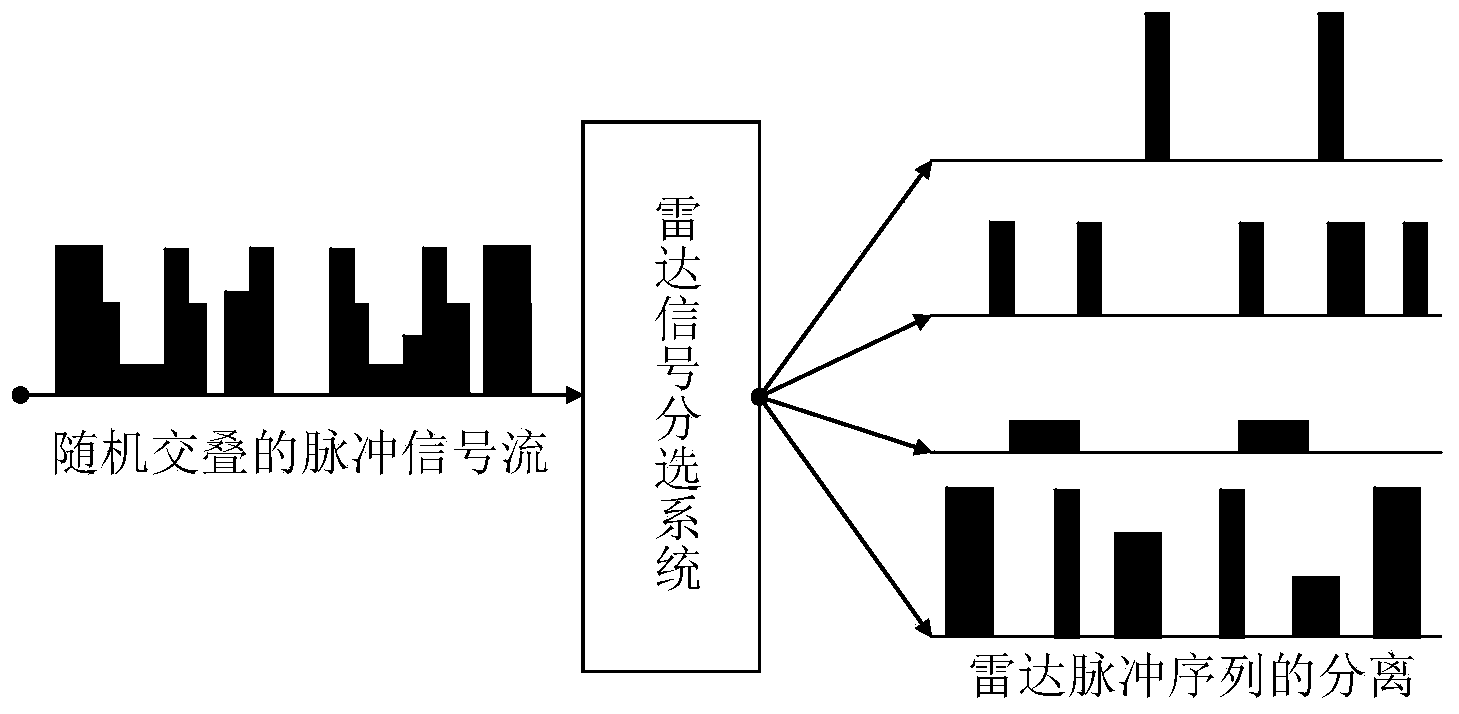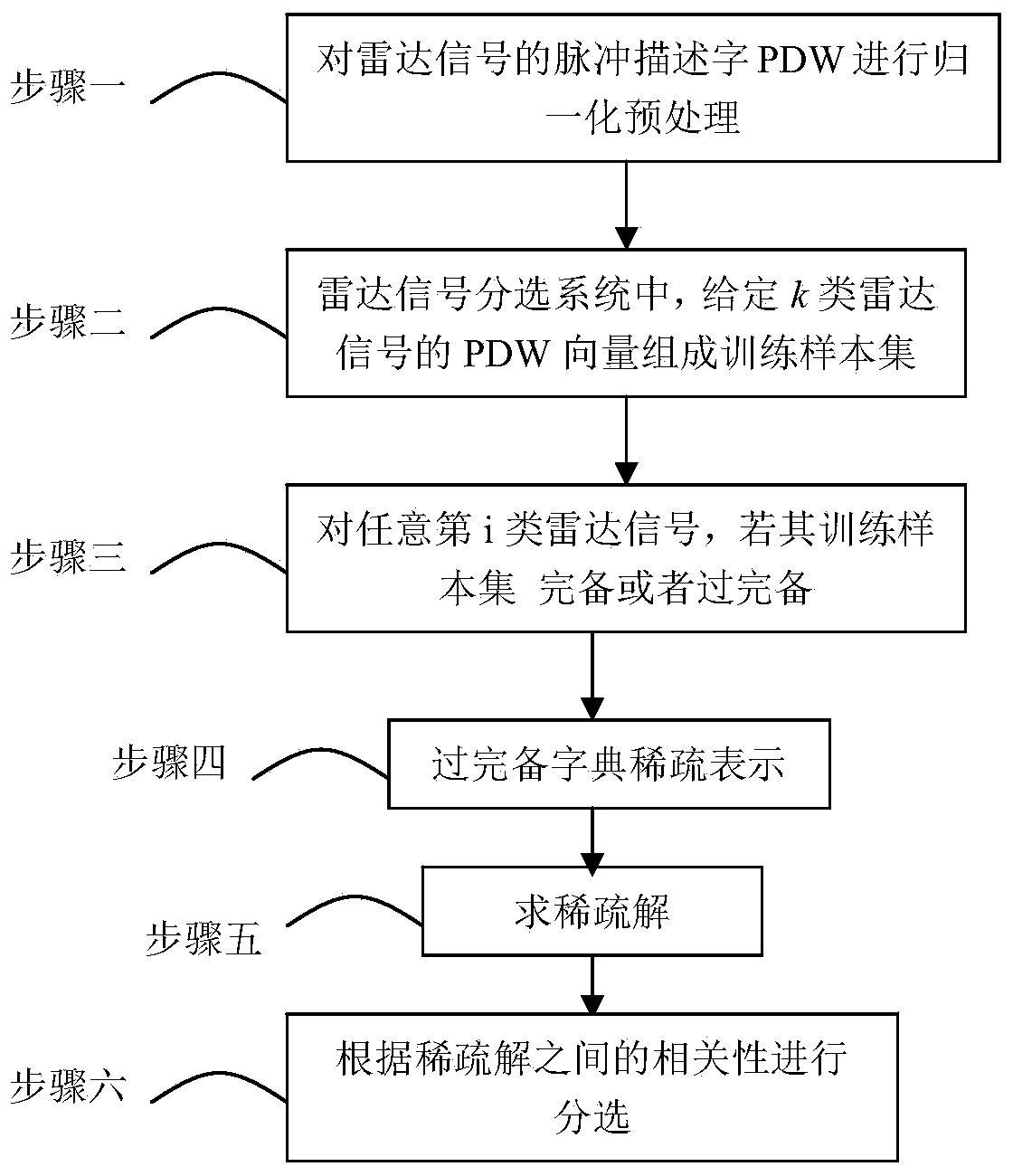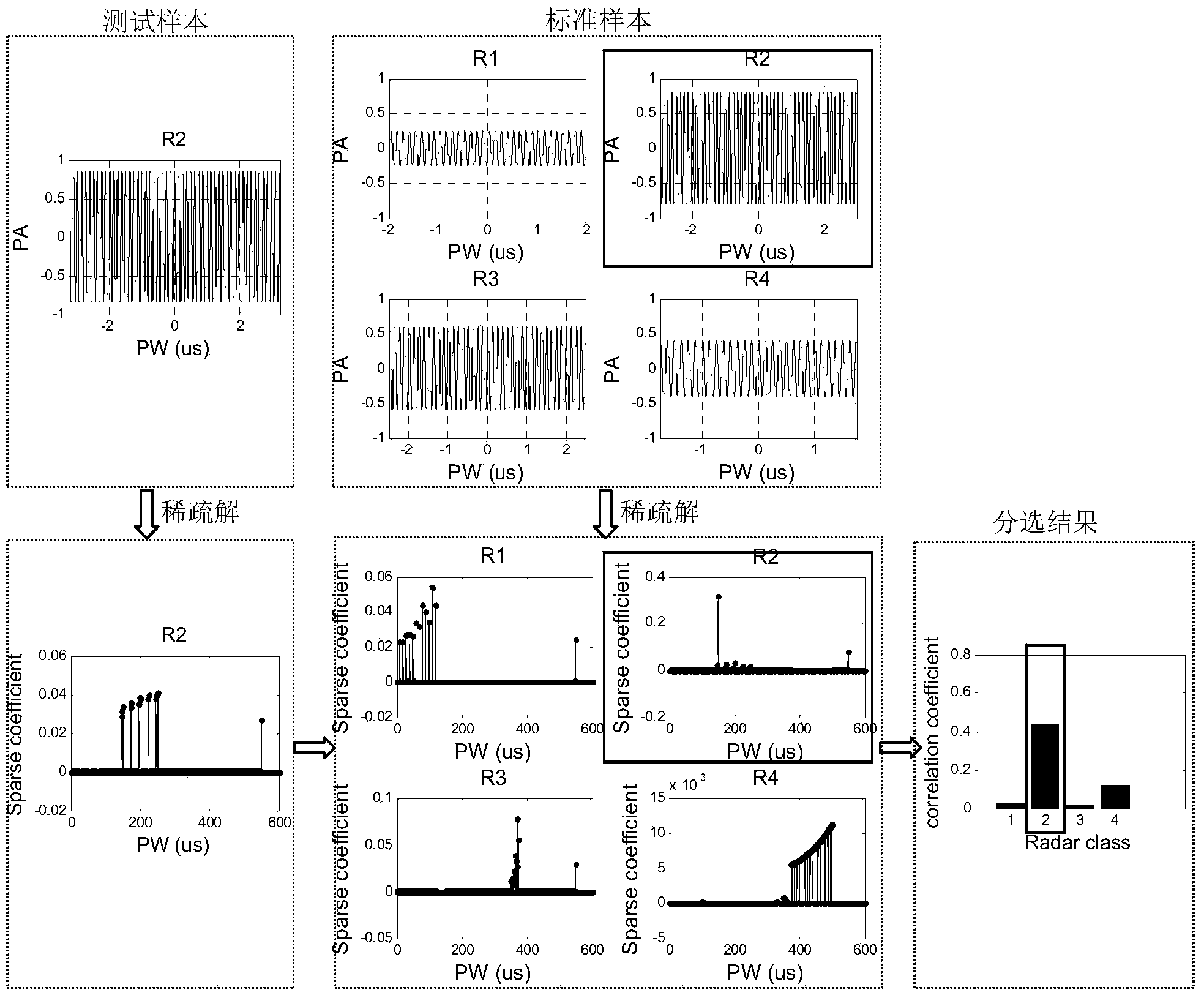Radar signal sorting method under minimum L1 bound norm
A radar signal sorting and radar signal technology, applied in radio wave measurement systems, instruments, etc., can solve problems such as poor radar signal sorting results
- Summary
- Abstract
- Description
- Claims
- Application Information
AI Technical Summary
Problems solved by technology
Method used
Image
Examples
specific Embodiment approach 1
[0037] Specific implementation mode 1: The process of a radar signal sorting method under a minimum L1 norm in this implementation mode is as follows:
[0038] The process of a radar signal sorting method under the minimum L1 norm is:
[0039] Step 1, preprocessing: perform normalized preprocessing on the pulse description word PDW of the radar signal:
[0040] formula one p = p - p min p max - p min
[0041] Among them, p is the pulse descriptor of the radar signal, and p max Indicates the maximum value of the pulse description word PDW vector p, p min Represents the minimum value of the pulse description word PDW vector p;
[0042] Step 2, establish a sample set: In the radar signal sorting system, the PDW vectors of t...
specific Embodiment approach 2
[0063] Specific embodiment 2: The difference between this embodiment and specific embodiment 1 is that the pulse descriptor PDW of the radar signal described in step 1 is composed of parameters representing the characteristics of the radar signal; wherein, the parameters representing the characteristics of the radar signal Including the direction of arrival DOA of the signal, the signal carrier frequency RF, the pulse width PW and the pulse amplitude PA, together constitute the pulse description word PDW of the radar, that is, PDW={DOA,RF,PW,PA,…}. Other steps and parameters are the same as those in Embodiment 1.
specific Embodiment approach 3
[0064] Specific embodiment three: the difference between this embodiment and specific embodiment one or two is that: the standard sample described in step two is obtained by taking the mean value of each type of radar within the fluctuation range of its PDW parameter, and the PDW parameter of the radar is specific Including direction of arrival DOA, signal carrier frequency RF, pulse width PW and pulse amplitude PA. Other steps and parameters are the same as those in Embodiment 1 or Embodiment 2.
PUM
 Login to View More
Login to View More Abstract
Description
Claims
Application Information
 Login to View More
Login to View More - R&D
- Intellectual Property
- Life Sciences
- Materials
- Tech Scout
- Unparalleled Data Quality
- Higher Quality Content
- 60% Fewer Hallucinations
Browse by: Latest US Patents, China's latest patents, Technical Efficacy Thesaurus, Application Domain, Technology Topic, Popular Technical Reports.
© 2025 PatSnap. All rights reserved.Legal|Privacy policy|Modern Slavery Act Transparency Statement|Sitemap|About US| Contact US: help@patsnap.com



